LondonÔÇÖs lack of a coherent tall buildings policy has led to controversial ÔÇścarbunclesÔÇÖ such as the Walkie Talkie crowding its skyline ÔÇô and a further 200 tall towers are proposed for the capital. Ike Ijeh wonders if other old cities offer lessons in how to integrate tall buildings into their historic fabric
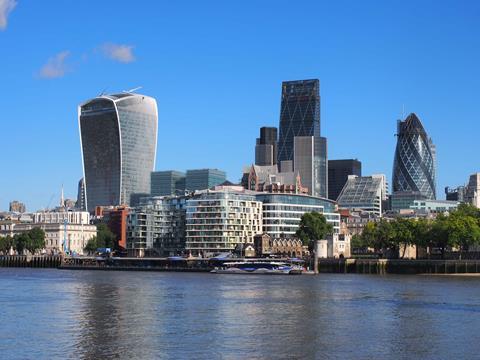
Last week our sister publication BD awarded the Carbuncle Cup, the irreverent annual prize for BritainÔÇÖs worst building, to the Walkie Talkie, the 37-storey skyscraper that keeps a maleficent eye over the City of London. This comes hot on the heels of the unveiling earlier this year of controversial proposals for a new tower on the site of the abandoned Pinnacle stump nearby and the unsuccessful conclusion to the protracted legal challenge attempting to stop the development of a series of towers along the South Bank.
And in the background to all this, consternation persists about the profusion of foreign investor-backed luxury residential towers sprouting across the city while thousands of Londoners are in the grip of an affordable housing crisis, a situation that has pressed the mayor of Hackney to call for the rejection of fiercely criticised skyscraper plans for Bishopsgate Goodsyard within his own borough.
This chaotic convergence of events once again underlines how LondonÔÇÖs approach to tall buildings is in disarray. And this mess can be traced back to one indelible fact: the capitalÔÇÖs lack of an overall, strategic framework to guide the development of tall buildings in the city.
There are several reasons why such a policy, or even the planning framework to deliver it, does not exist. Chief among them are political indifference, the strength of London commercial interests, a buoyant property market resistant to strategic restraint, ingrained municipal fragmentation where boroughs exercise autonomous power, traditional British planning reluctance to enforce the zoned ÔÇťhistoric coreÔÇŁ concept that exists in several other European cities, the historic absence of totalitarian, dictatorial political regimes and, perhaps most pertinently, LondonÔÇÖs long history of organic, haphazard and unplanned development.
But does the coherent tall buildings policy that London so desperately needs exist elsewhere? And how have other old cities met the challenge of integrating new tall buildings into their own historic fabric and skyline? We may have much to learn by analysing the different approaches other cities have taken when trying to reconcile high-rise with heritage. One intriguing fact is revealed in the cities we feature over the coming pages: almost every city tall building policy was introduced as a consequence of outrage sparked by construction of an individual building popularly perceived as violating the character of the city. With the Walkie TalkieÔÇÖs recent accolade in mind, London might just be closer to a coherent skyline policy than you might think.
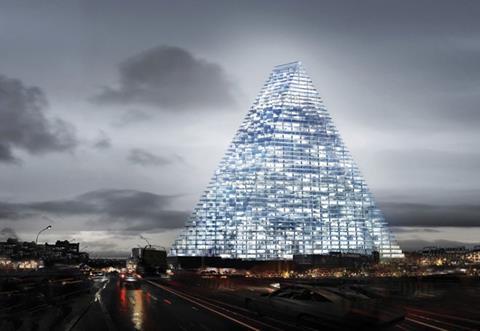
Paris, France
Up until recently ParisÔÇÖ tall buildings policy had been very straightforward: it was simply illegal to build anything over 36m, roughly the height of a 10-storey building. This city-wide law was introduced in 1977 when widespread revulsion at the new 210m Montparnasse Tower forced authorities to act. But even before Montparnasse, Paris pursued a rigorously controlled low-rise skyline. As with most aspects of modern-day Paris, it was Haussmann who first introduced this restriction, establishing strict rules that determined building height as a ratio of boulevard width. The edict was only relaxed for the Eiffel Tower as this was intended to be a temporary structure. Today, incredibly, 59-storey Montparnasse remains the only skyscraper within the municipal City of Paris boundary. Others, such as those at La D├ęfense, cluster defensively around the capitalÔÇÖs edge, leaving most of the cityÔÇÖs skyline essentially unchanged over the past 150 years.
But this might be set to change. This summer permission was granted for a 180m triangular skyscraper by Swiss practice Herzog & de Meuron, the first skyscraper in the historic heart of Paris for over 40 years. The project has attracted a firestorm of controversy which initially saw it rejected in 2008, a move which itself sparked intense debate about whether Paris should preserve its historic character or embrace tall buildings as inevitable symbols of metropolitan modernity. The mayor of Paris, a staunch supporter of the Triangle scheme, is now minded towards the latter and was instrumental in helping introduce the equally controversial relaxation of the 1977 height restrictions in 2010. Paris is clearly at a crossroads and many there, with dubious justification, look to London as an example of the high-rise Arcadia to which they should aspire. However, while there are more towers in the pipeline, ParisÔÇÖ centralised administration and heightened political appreciation of the symbolic value of its urban character and form are unlikely to tolerate the opportunistic skyscraper gold rush that has caused so much harm in London.

Washington DC, USA
Ironically, the US capital is probably the only city in America and perhaps the world where a lack of tall buildings can be construed as an active agent of democracy. According to the Washington PostÔÇÖs architecture critic Philip Kennicott, WashingtonÔÇÖs buildings are ÔÇťplanted grandly and serenely in the democratic landscape rather than striving for prominence in the Darwinian forest of commercial skyscrapers.ÔÇŁ Washington is arguably the most formally planned capital city in the world. Unsurprisingly it took a Frenchman to deliver its nodal array of sepulchral neo-classical monuments nestling among a sprawling radial grid of squares and avenues. The cityÔÇÖs vertical form reflected the rigour of its horizontal grain, with no building allowed to violate the twin skyline peaks of the 169m Washington Monument and the 88m US Capitol dome ÔÇô rules that remain in place today.
Accordingly, Washington maintains one of the strictest skyline policies of any capital city in the world. The 1899 Heights of ║├╔ź¤╚╔˙TV Act, sparked by outrage at the construction of the 50m, 12-storey Cairo Hotel in 1894, bans any building from being higher than 49m, with residential buildings limited to 27m and commercial buildings limited to 40m. Only a small slice of downtown commercial district is permitted to house buildings up to the ÔÇťextremeÔÇŁ 49m limit.
But while these rules have successfully preserved the impact of Washington as a city where the concept of democracy is tangibly expressed through the tremendous power of its architectural monuments, some argue they have suffocated its architectural creativity and forced rent and property prices to spiral in what is already one of the most expensive and unequal cities in the US. In his book, The Rent Is Too Damn High, author Matthew Yglesias points out that the DC area is the most expensive in the country, with commercial rents and even hotel rooms often twice the national average, ailments, he argues, that could be ameliorated with tall buildings.
One word neatly refutes this argument: London. Here, the plethora of planned tall buildings has neither reduced property values nor increased affordability, rather the opposite. Moreover, one suspects that WashingtonÔÇÖs developmental problems are more a complex concentration of endemic, national urban and socio-economic issues that are unlikely to be resolved by a simplistic sprinkling of phallic starchitecture. This counter-argument appears to hold sway with both federal and city government and there are no plans to relax WashingtonÔÇÖs stringent building height codes. It looks as if for the time being at least, the curious anomaly of the country where the skyscraper was born banning them from its capital is set to remain.
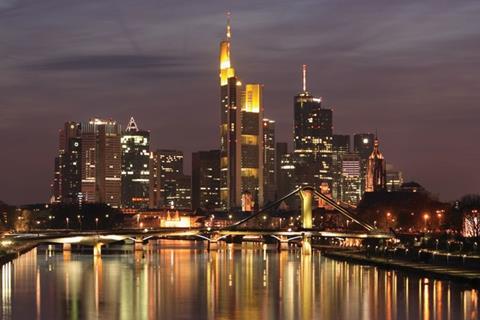
Frankfurt, Germany
Despite being first mentioned in 794, Frankfurt is a historic city in chronological terms alone. By the end of the Second World War, 65% of the city had been destroyed and less than 10% of its famed medieval centre, previously GermanyÔÇÖs largest, was left standing. But the astonishing story of FrankfurtÔÇÖs reconstruction mirrors the German economic miracle that took place after the war. Unlike Dresden and Munich, which were largely rebuilt in their original historic style, Frankfurt reinvented itself as a thoroughly modern city. Today, Frankfurt has one of the most dramatic modern skylines in Europe and its downtown financial district is crammed with skyscrapers. So much so that many consider Frankfurt to be EuropeÔÇÖs most American big city and Germans often nickname it ÔÇťMainhattenÔÇŁ.
But, despite its high-rise skyline, FrankfurtÔÇÖs volley of skyscrapers is not the result of the haphazard development or commercial opportunism that drives LondonÔÇÖs equivalents. Instead, development is channelled through a strictly controlled tall buildings policy that explicitly states where tall buildings can and cannot be located. The cityÔÇÖs High ║├╔ź¤╚╔˙TVs Strategy designates three specific building height zones or clusters in which tall buildings can be built. These zones are located to optimise density at public transport interchanges but even more importantly, they are sited to reinforce the radial structure that is an integral part of FrankfurtÔÇÖs urban grain and character. Critically, these zones come with stringent guidelines for what standards of public space, parking and street level activities should accompany towers at ground level. Another important regulation is that tall buildings are banned outside the central business district (another Americanism) where building height is strictly limited to 20m.
Even without an extensive historic fabric to protect, Frankfurt offers the kind of prescriptive, coherent, city-wide tall buildings policy that shames London. Even if its level of specificity appeals to a renowned teutonic predilection for forensic efficiency that might seem excessive to innate British pragmatism, the intricacy of FrankfurtÔÇÖs guidelines proves that effective planning control need not suppress tall buildings but merely quantify their impact on the rest of the city in a more rigorous and intelligent way. The results speak for themselves ÔÇô whereas LondonÔÇÖs skyline appears to be a chaotic scrum of belligerently individualistic towers knavishly jostling for attention, Frankfurt presents a tightly unified silhouette where every building is defined by careful reference to the whole.
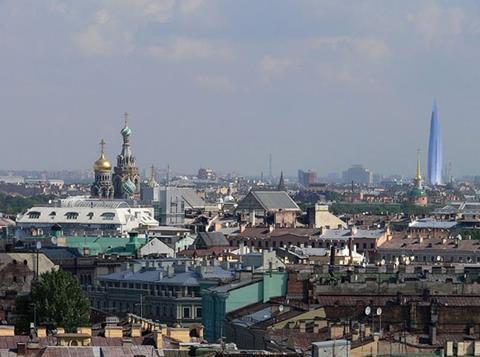
St Petersburg, Russia
There are some who justify the current molestation of LondonÔÇÖs skyline with mistaken claims that LondonÔÇÖs historic cityscape always lacked the beauty and order of Paris or Prague and was therefore never worth preserving in the first place. One city provides irrefutable proof of just how woefully inaccurate these assertions are: St Petersburg. In 1698 Peter the Great spent four months in London as a guest of William III and became so enraptured with what he saw here that five years later he began building the Russian city of his namesake heavily inspired by the churches, palaces and cathedrals he had seen crowded onto the bustling Thames skyline. While clearly conceived in a far more planned and ordered manner, today St Petersburg now provides more of an insight into the historic character of LondonÔÇÖs skyline than London itself.
Like Washington, St Petersburg is a hyper-planned city based on a uniform urban vision. This tightly controlled urban typology is reflected in its skyline which for over 300 years has been dominated, like LondonÔÇÖs until the Second World War, by the domes and spires of its historic monuments. Such is the regard in which the cityÔÇÖs neo-classical fabric is held that much of its historic centre is a protected Unesco World Heritage Site, one of the largest in the world. Within this zone buildings are restricted to a height of 40m, a marginal increase on the historic rules that traditionally stated that no building in the city should be higher than the Winter Palace.
But in 2005 this long-standing civic convention was shattered when energy giant GazpromÔÇÖs proposals for a twisting RMJM-designed 403m skyscraper stunned conservationists. The tower would have been the first in St PetersburgÔÇÖs historic centre and was approved despite breaking scores of planning rules. Pandemonium ensued. Protestors mounted legal challenges. Unesco threatened to strip St Petersburg of its coveted World Heritage status. Planning meetings descended into violent protest. The Russian Union of Architects boycotted the competition. And three of the four architects on the competition jury walked out in protest. (Strangely, as well as Norman Foster, one of the other abdicating panellists was Rafael Vi├▒oly who, while presumably balking at the threat to St PetersburgÔÇÖs character, swiftly took refuge in his fledgling Walkie Talkie proposals to defile one of LondonÔÇÖs World Heritage Sites instead.)
Happily, common sense prevailed and the proposals were finally abandoned in 2010 when a court ruled that the 40m height limit could not be violated. But in a defiant display of oligarchic bravado, a new site further outside the historic centre was selected and another 60m added to the tower. St PetersburgÔÇÖs flirtation with high-rise may have been brief but it dramatically exposes how vulnerable historic fabric can be when a coherent civic vision is sacrificed for the illusory gratification offered by a momentary fix of architectural binge-drinking. St Petersburg, unlike London, sobered up before it was too late.
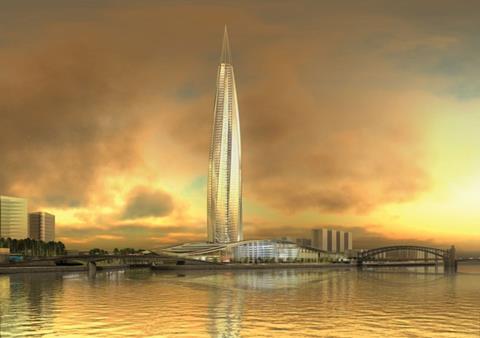
This yearÔÇÖs inaugural ║├╔ź¤╚╔˙TV Live event will feature a speech on school building in 2016 which will discuss some of the issues touched upon in this article. For more information see



























No comments yet